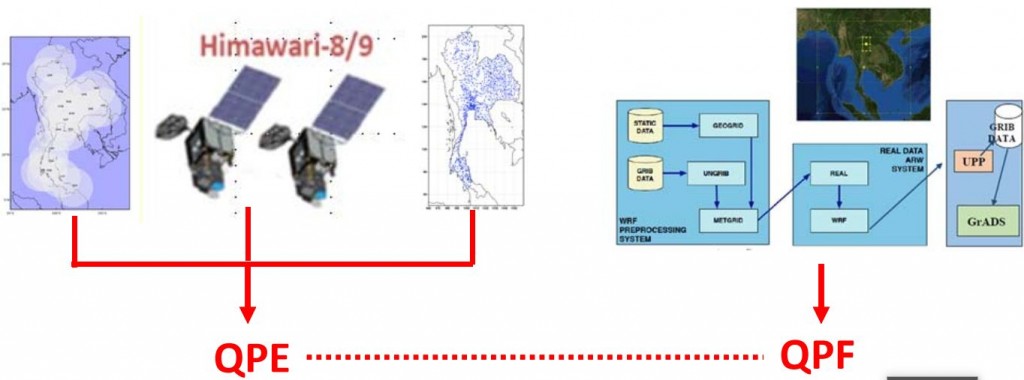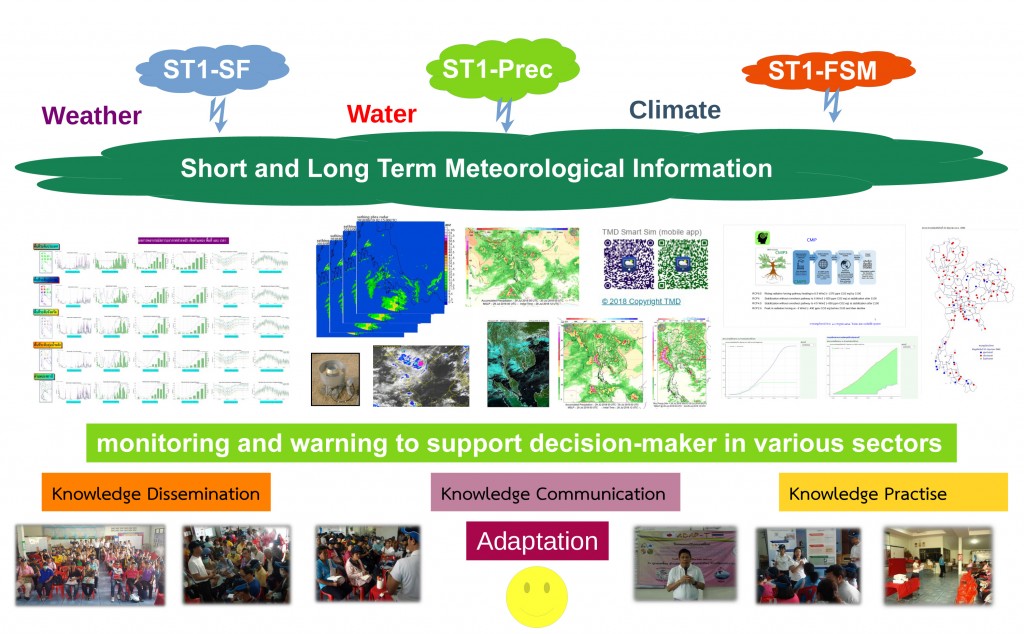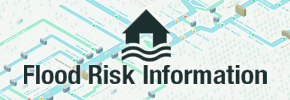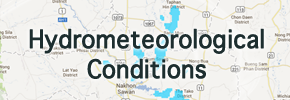ST1-Prec
Quantitative Precipitation Estimation (QPE) and Quantitative Precipitation Forecasting (QPF)
Members
Thai Side
- Patchara PETVIROJCHAI – Thai Meteorological Department (TMD)
- Mongkol RAKSAPATCHARAWONG – Kasetsart University (KU)
- Kamol PROMASAKHA NA SAKOLNAKHON – Thai Meteorological Department (TMD)
- Somkuan TONJAN – Thai Meteorological Department (TMD)
- Chatchai CHAIYASAEN – Thai Meteorological Department (TMD)
Japanese Side
- Shinta SETO – Nagasaki University (Nagasaki U)
- Masashi KIGUCHI – The University of Tokyo (UT)
Objective
To improve Quantitative Precipitation Estimation (QPE)/ Quantitative Precipitation Forecasting (QPF) products to get closer to the hydrological requirements and can be used more widely in hydrology and disaster reduction in practice such as integrate QPE/QPF into real-time operational flood forecasting and disaster monitoring and warning.
Expected Outcomes
- High resolution precipitation products support to hydrological forecasting, disaster risk reduction, water resource management and decision-maker.
- Hourly QPE from Radar and Satellite
- The amount of rainfall under Climate Change (CMC) such as extreme precipitation.
- Khon Kaen province QPF
Description of Activities
- Quantitative Precipitation Estimation (QPE)
- Estimation of Quantitative Precipitation from Radar (METRADAR-QPE) and Satellite (METSAT-QPE)
- Integrated METRADAR-QPE and METSAT-QPF for high resolution precipitation product
- Quantitative Precipitation Forecasting (QPF)
- Run WRF model simulation short range forecast, focusing on severe weather, heavy rainfall and precipitation prediction in Northeastern of Thailand
- Data assimilation
- End user response Management
- Disseminating result via TMD website (www.tmd.go.th) and social network. Workshop/seminar
Progress in June 2020





